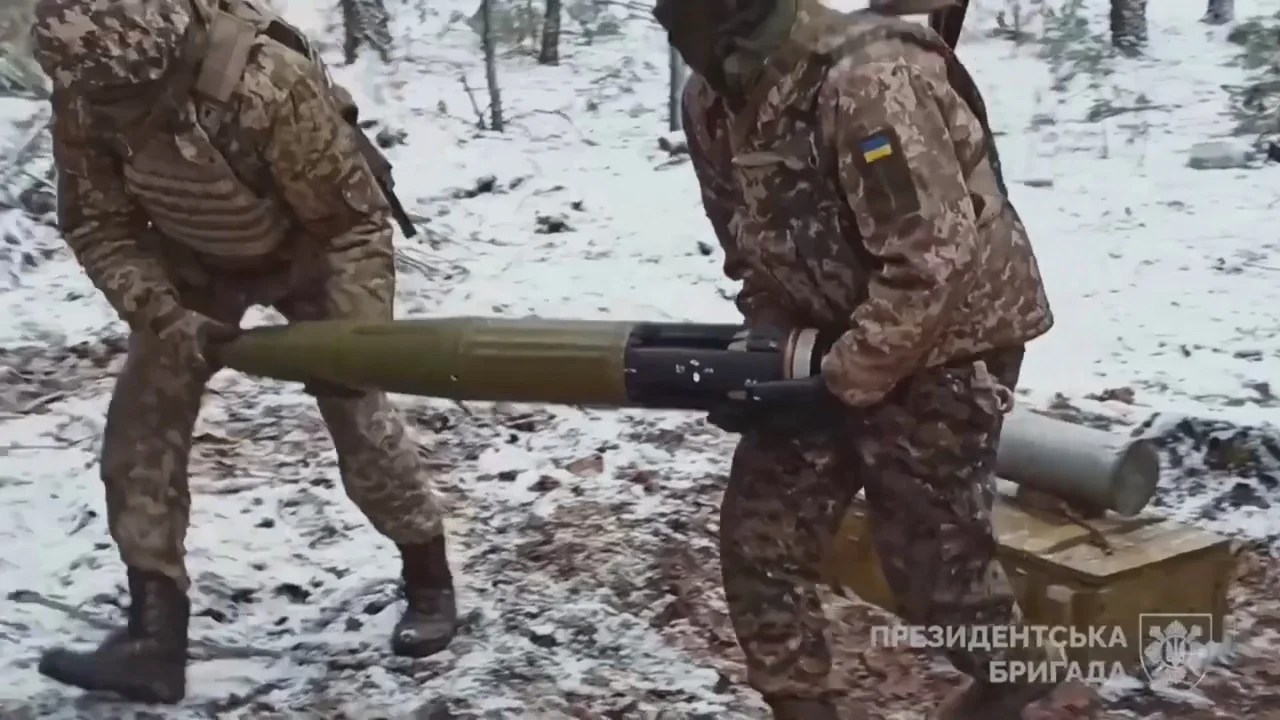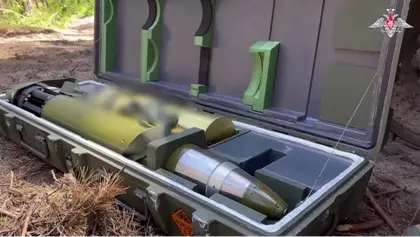Russia has according to official sources fielded an updated, precision-guided howitzer shell giving the Kremlin’s gunners new hope to level the playing field against more modern NATO-standard howitzers widely used by the Ukrainian army, but its capacity is still well behind analogous shells sent to Ukraine by its Western allies.
The updated Krasnopol-M2 shell is already in Russian army field service in Ukraine, and features computerized flight trajectory programming, better target designator tracking capacity and increased range from 20 to 26 km, a Monday report by the official Russian army Telegram channel Voenny Svedomitel said.
JOIN US ON TELEGRAM
Follow our coverage of the war on the @Kyivpost_official.
Images published by the Russian Defense Ministry showed an elongated, ballistically improved shell in packing materials. There was no evidence on where the munition was actually being in use, or what quantities were in Russian military logistics pipelines.
The Russian army started its full-scale war in Ukraine with a powerful advantage in artillery both in quantity and quality but has slowly lost those edges due to transfers of NATO-standard howitzers and shells to the Armed Forces of Ukraine.
NATO-standard artillery pieces commonly outrange Russian guns by 40 to 50 percent and are accurate enough to take out a Kremlin cannon in a single shot. With the exception of precision-guided shells like Krasnopol, the Russian artillery must attack Ukrainian targets using less accurate, multi-shell salvoes.

Moscow Prime Suspect for Sabotage Aimed at Disrupting Olympic Games
A weapon initially developed during the Cold War, the Krasnopol shell has been in production since the mid-1980s. It is by Russian standards an expensive munition costing around $35,000 a copy.
Russia exports the Krasnopol shell to Syria, Algeria, China, Greece and India, and in some cases not in Russian army standard 152mm caliber, but in NATO-standard 155mm caliber.
In 2007 the Indian military found some a 3,000-shell batch of Krasnopol shells imported from 1999-2002 were defective. In 2019 the Indian army for the first time fielded the NATO-standard competitor to the Krasnopol, the US-manufactured Excalibur precision-guided munition.
The Armed Forces of Ukraine (AFU) uses captured Krasnopol shells captured in quantity in counteroffensives last year, its own version of the Russian shells, called Kvitnik-T, and Excalibur shells sent according to open sources to Kyiv by the US, Britain and Canada.
Ukrainian troops reportedly captured Russian laser guided artillery shells Krasnopol in the area of Izium, Kharkiv Oblast
— Euromaidan Press (@EuromaidanPress) October 4, 2022
📷https://t.co/xodPSi6b25 pic.twitter.com/0OuGEYiKyc
AFU artillery gunners widely consider the NATO shell greatly superior to the Russo-Ukraine shell, particularly for counter-battery work at long ranges.
Manufactured by BAE Systems, the cost of a single Excalibur shell, depending on batch and national army doing the bookkeeping, ranges from $70,000 to $100,000 – two to three times the price of the Russian Krasnopol.
The Armed Forces of Ukraine (AFU) have named the destruction of Russian artillery as a long-term war strategy, and prioritized fire missions against Russian howitzers, heavy mortars and rocket artillery pieces.
Russian losses since Ukraine’s launch of a summer offensive in early June are at an effective wartime peak, according to AFU claims.
Caption for images below: Russian Defense Ministry official image of advanced Krasnopol-M2 precision-guided artillery shell.

Caption : Ukrainian artillerymen prepare a captured Russian Krasnopol shell for firing. Source: Ukraine Defense Ministry
You can also highlight the text and press Ctrl + Enter






